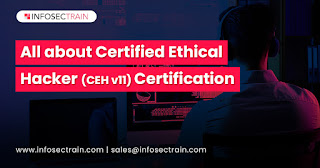An Introduction to CISSP Certification
CISSP (Certified Information Systems Security
Professional) is one of the globally renowned certifications in the information
security industry. Having this credential shows you have gone through the
rigorous process of understanding IT infrastructure and honing skills to design
and build a secure business environment. CISSP validates an information
security professional's in-depth technical and managerial knowledge and experience
to efficiently plan and maintain an organization's overall security posture. A
survey conducted by the global information security and workforce study showed
that 25% of CISSP certified professionals believed their certification helped
increase their salaries.
CISSP is not an entry-level certification. To
get a CISSP
Certification, you should have five years of
full-time work experience in two of the eight CISSP domains. A four-year
college degree or another (ISC)2 certificate can substitute a year of
experience.
·
CISSP is a CAT (Computerized Adaptive Test) format.
·
How specifically CAT format
works: When you begin the examination, you will be
given four choices for each question. Choose one of the correct answers. When
you choose a response and submit the answer, the next question will be based on
theprior question's response. If someone has done the previous question
correctly, the next question will be slightly difficult. If someone has done
the previous question wrong, the difficulty level of the next question
decreases.
·
The duration of the CISSP exam is
three hours.
·
You can not go back to the
previous question and flag the question.
CISSP Certification consists of eight domains:
It explains security risk and control. It will
provide you a holistic view of security risk, governance risk management and
also informs how you can take care of business continuity planning at an enterprise-level.
This domain has the highest percentage in the examination.
The next domain is assets security, a smaller
domain but surely an important one. This domain will teach you about asset
classification, privacy protection,asset retention, data security controls, and secure data
handling.
It involves five distinct modules and three
other parts. It explains cryptography, security architecture, and engineering,
system architecture, and it also informs about physical security. So it is
necessary for the examination point of view.
It is one of the extensive domains in CISSP
from an exam point of view. Most people do not have a networking background, so
they can have difficulty understanding this domain's concepts.
This domain covers Physical and Logical Access
Control, Identification, Authentication, Authorization, Authorization
Mechanism, and Access Control Attack Mitigation.
In this domain, we look at different features
that we need to know from an application security perspective. It covers System
Security Control Testing, Software Security Control Testing, Security Process
Data Collection, and Audits.
This domain covers various security operations
concepts such as Physical Security, Personnel Security, Logging and Monitoring,
Preventative Measures, Resource Provisioning and Protection, Patch and
Vulnerability Management, and Incident Response.
Domain 8: Software development security (10%):
In this, we will see various ways of
developing software(like software development life cycle, life cycle model, and
activity of malicious code and their impact on applications, including your
software applications).
How Can
InfosecTrain Help you?
InfosecTrain
provides
all the necessary CISSP certification exam
guidance. Certified instructors deliver all training with years of industry
experience. You can check and enroll in our CISSP Certification
Training to prepare for the certification exam.




Comments
Post a Comment